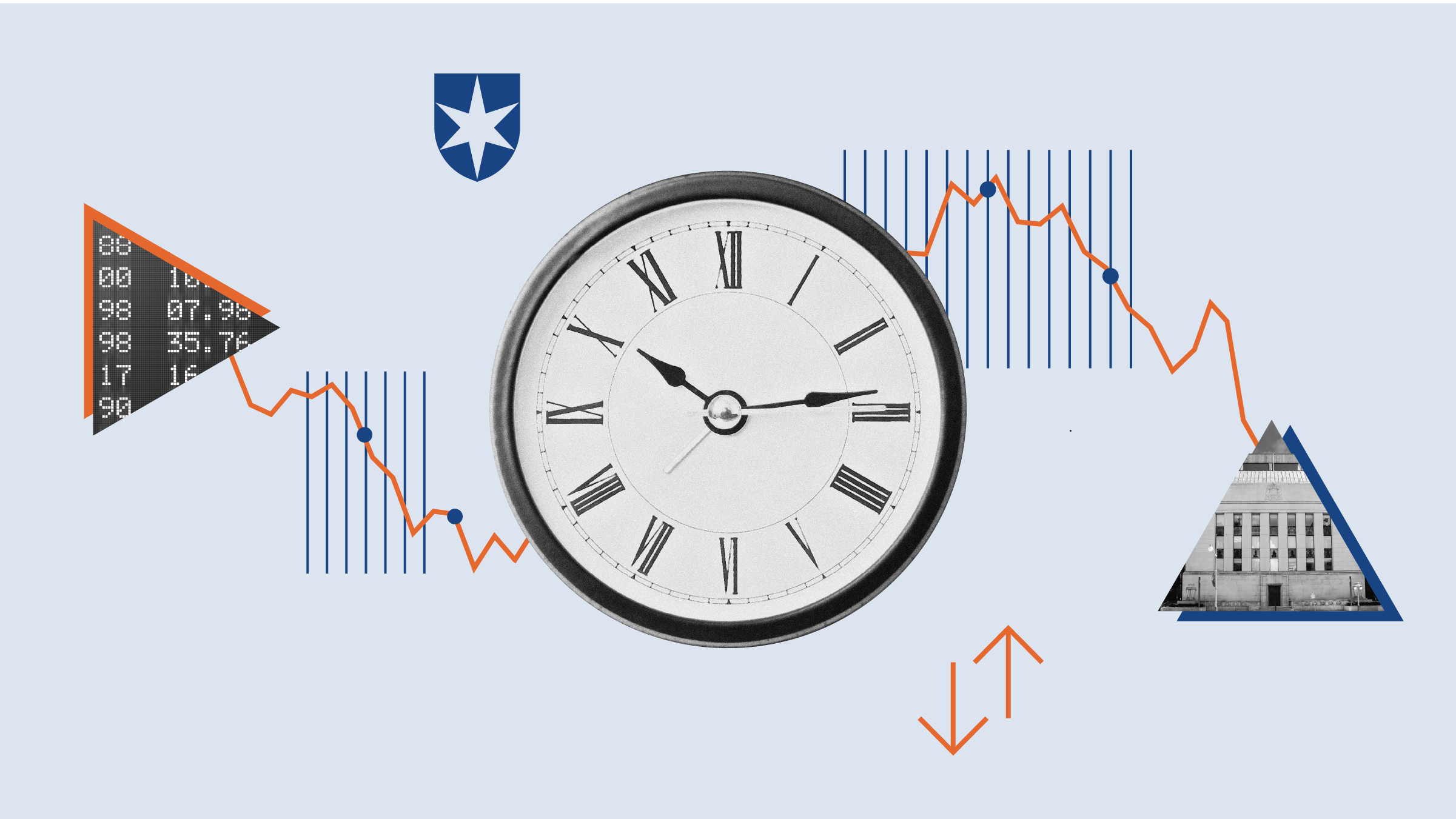After reviewing our global coverage of industrial stocks, we noted that only two companies boasted 5-star ratings. One hundred and twenty-four companies (or 71% of our coverage) have lower than a 4-star rating, indicating that our analysts believe these stocks are, at best, fairly valued.
Manufacturing data turned positive in the United States, but remained challenged in other markets. In May, the U.S. Institute for Supply Management (ISM) manufacturing purchasing managers' index (PMI) came in at 51.3. This was indicative of manufacturing expansion but was still below peak readings achieved in 2015 (53.9) and 2014 (58.1). May marked the third consecutive month of expansionary readings in the U.S. The ISM New Orders Index also remained strong in May, which is indicative of a sustainable recovery despite the strong dollar and weak commodity prices.
Manufacturing data was less rosy throughout the rest of the world. The Markit Eurozone Manufacturing PMI registered 51.5--still expansionary, but the lowest reading in three months. New European export order growth was at a 16-month low, as businesses reported difficult domestic and export markets. The Caixin China Manufacturing PMI contracted in May to 49.2, versus 49.4 in April. The China Manufacturing PMI has been below the 50.0 neutral level for 15 consecutive months. Finally, the Markit Brazil Manufacturing PMI dipped to 41.6 as businesses reported worsening economic conditions. May marked the worst reading for Brazil since February 2009, and 87 consecutive months below the 50.0 neutral level.
U.S. residential construction continued to gain momentum during the second quarter of 2016. Total starts are up 11% from the same period in 2015, driven by single-family starts, which are up 18% for the year to date, and offset by weaker multifamily starts, which are down 1.5% for the year to date. Although we believe our 2016 forecast of 845,000 single-family starts is attainable, we have reduced our forecast for multifamily starts to 375,000, as multifamily construction lending appears to be tightening and permit activity has been down. Our long-term outlook on U.S. housing remains unchanged. We still expect starts to peak at nearly 1.9 million in 2020, as household formation strengthens amid tighter labour markets and looser financial constraints.
Our bullish forecast hinges on a sustained recovery in household formation. Data from the Census Bureau's Housing Vacancies and Homeownership Survey suggests that 2015 marked a turning point. The U.S. headship rate, the percentage of adults that head a household, improved to 45.2% in 2015, up from 44.8% in 2014, the largest increase we have seen since 1996. Still, headship rates remain well below historical standards, especially among younger adults hit hardest by the financial crisis. As the millennial generation enters its 30s, marriage and childbirth will become headship tailwinds as those individuals strike out on their own. Nearly a decade of anemic property development since 2006 will require a resurgence in U.S. homebuilding to shelter these new families.
We expected weak numbers for May U.S. light-vehicle sales relative to April's seasonally adjusted annual rate, or SAAR, of 17.42 million, as there were two fewer selling days in May 2016 compared with May 2015. Industry sales slid 6.1% year over year; however, the SAAR held firm despite the reduction in selling days, coming in at 17.46 million, compared with 17.71 million in May 2015.
We do not see weakness across every vehicle segment, and the most expensive segments--light-trucks and premium/luxury--remained healthy. Nor do we believe there is a demand problem or an industry on the verge of a recession. Instead, we think the U.S. industry is plateauing and expect demand to remain healthy for some time to come.
The fleet remains old, miles driven have increased, credit is available, and gas prices, although up recently, are bringing consumers into showrooms to buy crossovers, pickups, SUVs, or vans. For example, the industry's light-truck mix in May was 59%, quite a move from the mid-40s in 2008-09.
Internationally, the UK vote to leave the EU raises economic uncertainty, possibly resulting in declining light vehicle sales, but the mechanics of exiting will take several months. In the meantime, given the recent strength in EU auto demand, we continue to expect EU full-year 2016 light vehicle sales to increase by 5% to 7%. We expect Brazilian volume to trough this year on the expectation that a new administration, with the impeachment of President Rousseff, will immediately seek economic stimulus to quickly turn around the country's faltering economy. As the middle-class population in these regions expands, emerging markets offer tremendous long-term growth potential for automakers, with entry-level vehicle segments averaging 25% of global auto production.
Although the U.S. defence budget fell 25% between 2008 and 2015, we expect it to return to annual growth of 1% to 2%. The threat environment, fiscal deficits, defence budget cycles and politics all point toward a modest but sustained upturn in U.S. defence spending that will last through the next decade.
Sluggish freight demand has loosened truckload industry capacity and begun to pressure underlying rates. Most of the truckload carriers on our coverage list expect core pricing conditions to remain weak in the second quarter, as capacity remains somewhat slack across the industry. On the positive side, many industry participants still anticipate better pricing conditions in the first half of 2017, with help from easing comparisons and the prospect of some supply (small carriers) exiting the market. Although not a certainty, we think this is a reasonable assumption, given how far spot rates have fallen, coupled with the high-fixed-cost nature of trucking and recent regulatory changes (particularly new electronic logging device rules).
Rail continues to face serious volume challenges because of low commodity prices (in particular, natural gas that is sufficiently cheap to make coal relatively unattractive), lower commodity demand from China, and reduced oil and gas investment. We do not expect the trends creating these headwinds to change significantly in 2016, and weak rail carload data through the first five months of 2016 aligns with this view. As of the week ended June 4, year-to-date North American total carloads are down 13%, with coal carloads down a staggering 33%. Total intermodal units are down 2% for the year to date.
Top picks
![]() BorgWarner (BWA)
BorgWarner (BWA)
Star Rating: 4 Stars
Economic Moat: Narrow
Fair Value Estimate: US$52.00
Fair Value Uncertainty: High
Consider Buying: US$31.20
The global trend toward cleaner, more fuel-efficient vehicles is good news for BorgWarner. We expect this trend will drive increased demand for the auto-parts supplier's engine and drivetrain technologies, resulting in 10% annualized sales growth over the next five years. BorgWarner's valuable intangible assets, high customer switching costs and cost advantages earn the company a narrow moat rating. The company benefits from a substantial global manufacturing presence, highly integrated and long-term customer ties and moderate pricing power on new technologies. BorgWarner's ability to consistently innovate provides long-term pricing opportunities that, in conjunction with cost advantages derived from low-cost country locations, should enhance margins and returns on invested capital. At current prices, we believe BorgWarner is attractive for investors seeking to add auto exposure to their portfolio.
![]() Embraer (ERJ)
Embraer (ERJ)
Star Rating: 4 Stars
Economic Moat: Narrow
Fair Value Estimate: US$34.00
Fair Value Uncertainty: High
Consider Buying: US$20.40
Embraer boasts leading market share of aircraft between 70 seats and 130 seats. We see global urbanization, aircraft replacement demands and a potential for U.S. scope clause changes as tailwinds for the regional aircraft manufacturer. We expect Embraer's leading position in regional jets, a more comprehensive line-up of business aircraft and a growing defence business to drive sales and profit growth. We believe Embraer's intangible assets and high switching costs have allowed the company to maintain a market leadership position and earn the company a narrow moat rating. Historically, Embraer's returns on invested capital have been strong, thanks to solid margins combined with limited working capital demands. Embraer's ADRs look undervalued, in our opinion, and we see nearly 70% upside.
![]() Stericycle (SRCL)
Stericycle (SRCL)
Star Rating: 4 Stars
Economic Moat: Wide
Fair Value Estimate: US$127.00
Fair Value Uncertainty: Medium
Consider Buying: US$88.90
We see opportunity in wide-moat Stericycle's shares at present, as operational issues have plagued the firm since the completion of the PSC Environmental and Shred-It acquisitions in 2014 and 2015, respectively. As the largest provider of regulated medical waste management, the company enjoys superior positioning in a niche market protected by strong barriers to entry. We believe that rising costs support an increased appetite for healthcare providers and pharmaceutical companies to outsource waste disposal, a dynamic that will preserve stability in Stericycle's core business. However, the company's growth trajectory has evolved toward offering customers additional services, such as compliance training, patient appointment reminders, and hazardous waste collection. The $2.3 billion Shred-It deal, the largest in the company's history, brought paper-shredding into the mix; however, synergy delays, along with sluggish waste volumes at the industrially focused PSC Environmental, have contributed to weaker-than-expected earnings growth over the past several quarters, rattling a market that historically awarded Stericycle's acquisitive growth strategy with a premium multiple.
At 4 stars, we believe the risk-reward relationship is now more compelling, and although we acknowledge that Stericycle's earnings may still experience near-term volatility, in the longer term, the company has ample opportunity to weave itself even deeper into the operational fabric of its customers as it adds new services to its portfolio of offerings, strengthening switching costs over time.
More quarter-end insights
Stock market outlook: A year of contradictions
Basic materials: Recent commodity rallies leave few opportunities
Consumer cyclical: Market underestimating apparel and e-commerce
Consumer defensive: Not a lot to feast on
Energy: Supply glut continues, but some respite on pricing
Financial services: Accounting for Brexit and the fiduciary rule
Healthcare: Stock selection increasingly important
Real estate: 'Safety' becomes more expensive (Friday)
Tech & telecom: We see opportunities in Apple and Microsoft (Friday)
Utilities: Is a sector-shaking pile-up coming? (Friday)















